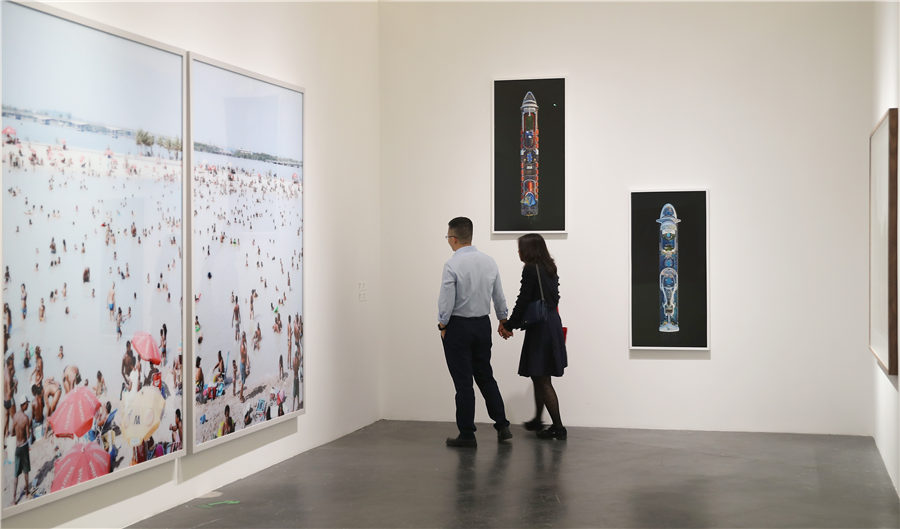 |
|
798's status as an international art hub came about largely as a matter of happenstance and location. [Photo by Zou Hong/China Daily] |
Tinari, whose UCCA center has grown to about 1,400 staff since its founding in 2007 and is one of the largest institutions of its kind, said the zone plays a key role in the global impact of Chinese contemporary art.
At the Art Basel Hong Kong international art fair, for example, more than 60 percent of Chinese galleries which present in the top annual event hail from the zone, Tinari said.
"If you look at the global art market, China has actually a very huge piece of the pie, like right there with some of the major international centers. What's interesting about Chinese contemporary art is that it's not the flavor of the month anymore. It definitely went through that period, in the late 1990s and early 2000s ... That's not where we are anymore," Tinari said.
Professor Gladston, who has written extensively on the subject, said "two of the biggest changes in China's contemporary art scene in recent decades are, on the one hand, the establishment of contemporary Chinese art as a globally significant phenomenon, culturally, socially and politically, and, on the other, an increasing confidence among Chinese artists in asserting specifically Chinese cultural identities".